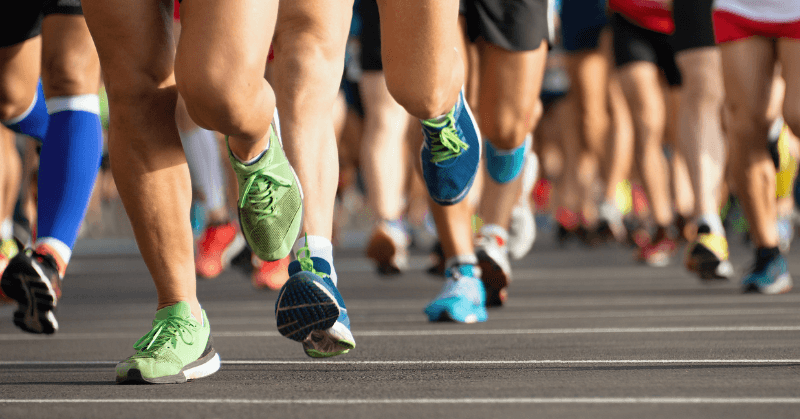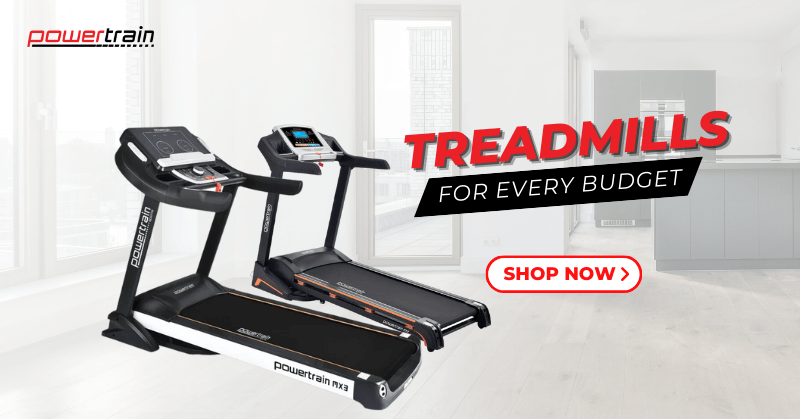How to Choose the Best Running Shoes for Beginners

Running shoes are a must-have whether you've recently chosen to go for daily runs or have begun training for an upcoming marathon. The right running shoes will provide the proper foundation to balance your weight, adjust your stride and prevent injuries.
As a beginner, choosing the right running shoes can be overwhelming. You don’t know what to look for, the shoe lingo is confusing and there is a multitude of options to choose from.
To help you out, we have put together a small guide on how to choose the right running shoes.
Why Do I Need Running Shoes?
Running puts continuous and repetitive pressure on our joints, unlike walking. Although you can run in almost any footwear, proper running shoes prevent injuries and pain due to joint stress.
Shoes designed for running absorb shock, which may otherwise travel to the joints and cause problems like Achilles tendinitis, back pain and runner's knee.
And if that’s not enough reason to get a new pair, runners who use the right type of shoes may see improvements in their athletic performance.
Factors to Consider While Choosing Running Shoes
There are no universally right running shoes. You should always prioritize your comfort when picking footwear, especially if you’ll be using them for physical activity. Shoes that work for one person may not work for another.
Here are a few factors to consider when choosing running shoes:
- running surface,
- fit,
- running style or gait
- preference,
- arch support, and
- brand fits.

Let’s take a deeper look at each one:
Running Surface
Plan on running in your nearby park or going offbeat and exploring the trails? Or are you just looking to squeeze in some treadmill time during your busy day? The ideal type of running shoes varies depending on the terrain, weather condition and the distance you want to cover.
If you run on mostly flat surfaces like pavements or parks, everyday running shoes are a good choice. They are light, flexible and have flatter soles and good cushioning to make your stride comfortable.
Trail running shoes are designed to provide better grip on uneven surfaces. They offer good support and stability and may have underfoot plates to protect them from sharp objects.
Finally, lightweight running shoes are perfect for indoor activities. They are flexible and are less cushioned than everyday shoes. When you don't have time to go outside, indoor exercise is an excellent option.
Fit
When it comes to footwear, the most important element to consider is comfort. Your shoes should fit you properly and allow you to move freely. Here are some pointers to help you find shoes that fit well.
Shop for your shoes at the end of the day.Our feet swell slightly after our daily activities. Shopping at the end of the day will ensure that you don’t buy shoes that are one size small.
Buy a snug-fitting shoe.Your shoes should fit you snugly without pinching your toes. Ideally, you should be able to wiggle all of your toes and have a thumb's width between your foot and the end of your shoes. If you wear insoles or orthotics, try the shoes with them on.
Wear both shoes.Some people have one foot slightly bigger than the other. The difference may or may not be noticeable, but it's important to check both the shoes and buy the size that fits your larger foot.

Shoes are built differently for narrow and wider feet. To avoid discomfort, buy shoes that are the correct width for your foot type.
Try before you buy.Run a few laps in the shoes to confirm that they are comfortable and slip-resistant.
Running Style or Gait
Your running style or gait is the way your foot moves and hits the ground when you take a stride.
There are three types of running styles and each requires different types of shoes.
1. Neutral or Basic PronationOur feet roll inward naturally. This helps absorb the impact and reduces the pressure on our knees. Runners with this neutral pronation need light basic shoes with stability and heel cushioning.
2. Over-pronationIn this type, the foot rolls inward more than it should. Overpronation makes it difficult to stabilise the body. Hence, such runners may need motion control shoes or stability shoes with extra structured support.
3. Underpronation or SupinationThis is the opposite of over-pronation. When a runner with under pronation strikes the ground, the foot rolls outward. As a result, they require shoes with additional cushioning and flexibility.
Preference

Running shoes come with varying amounts of cushioning. Cushioning is primarily determined by two factors: the firmness of the foam and its height.
Some runners like a soft, comfortable feeling while others want to keep it as natural as possible by choosing minimal cushioning.
You may select from maximal, moderate, minimal or barefoot cushioning based on your preference. Maximal running shoes have the thickest padding while barefoot shoes have the most negligible padding.
Arch Support
The arches of our feet act as shock absorbers and prevent any pressure from travelling above the ankle. Shop owners will recommend insoles for your shoes based on the type of arch you have—low, regular or high. The right insoles will make your run more comfortable.
Brand Fits
Different brands have different size guides. Your shoe size in one brand may differ in another.
When purchasing shoes online, it is usually a good idea to measure your feet and compare them to the brand's size guide.
When shopping in-store, you can try out the fitting, so it will not be an issue.
Go for a Run
Don’t allow jargon like ‘heel counter’ and ‘saddle’ keep you from buying the right running shoes. Despite the complex terms, buying running shoes is quite easy. You just need to know the basics—your running surface, running style and your preference to get the fit right.
Running makes for excellent cardio exercise. It strengthens our joints and uplifts our mood.
Running on the treadmill makes for excellent cardio exercise as well. It gets your blood pumping and improves your muscle endurance.
Check out our range of treadmills and get started with your cardio routine.
You May Also Like:
- Which Powertrain Treadmill Should I Get?
- Basic Treadmill Care & Maintenance Guide
- 7 Healthy Post-Workout Snacks You Can Make in Under 10 Minutes


